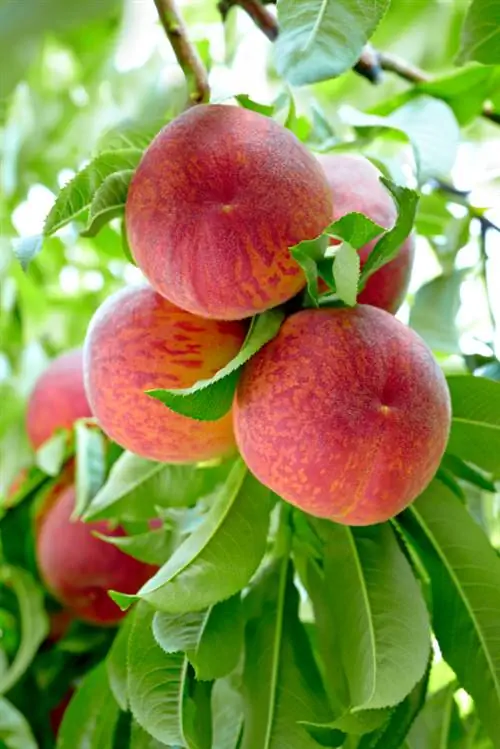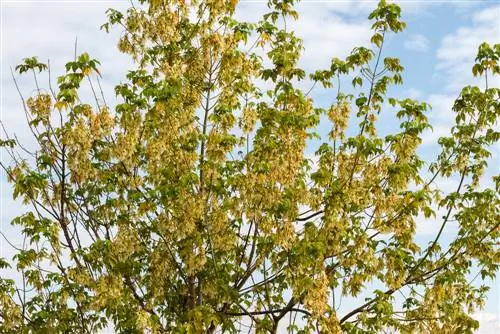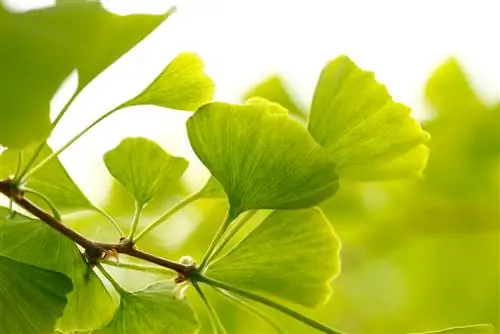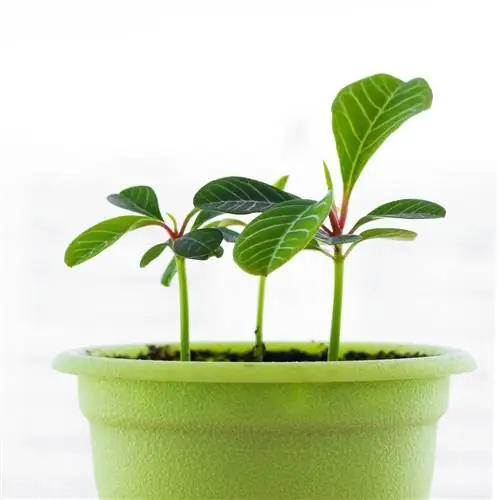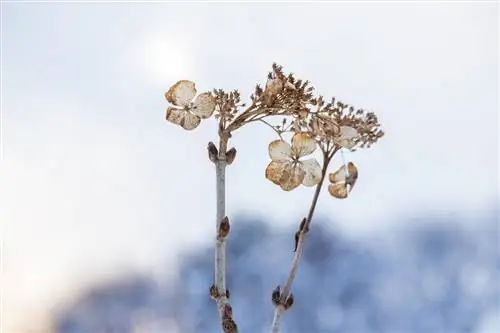- Author admin [email protected].
- Public 2023-12-16 16:46.
- Last modified 2025-01-23 11:19.
There are an estimated 3,000 different types of peaches worldwide, although no one can say exactly how many there actually are. These include numerous popular cultivated varieties, but also rarities such as the red-leaved peach Rubira.
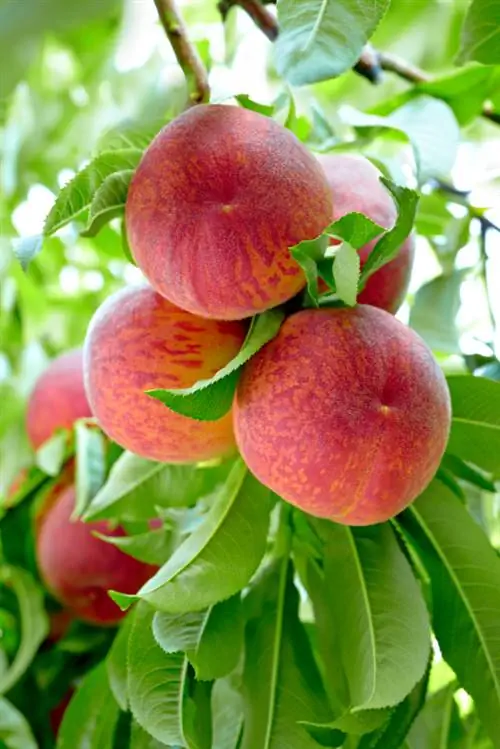
What characterizes the Rubira peach variety?
The Rubira peach is a special variety with reddish foliage and dark red fruits that are not very sweet but very aromatic. It is suitable for growing in the garden or in a container, but requires regular pruning, sun and humus-rich soil for optimal results.
Rubira is also called “blood peach”
The Rubira peach variety remains relatively small and, when planted freely in the garden, reaches an average height of around two meters. Due to its small growth, the variety is also suitable for cultivation in a bucket. Rubira is particularly noticeable because of its reddish foliage and, in spring, its magnificent and lush pink flowers. Rubira blooms very late for a peach, between May and June. The later fruits are also a strong, dark red, which is why this peach is also called the “blood peach”.
Intense peach flavor
Rubira fruits are not very sweet, but have a pronounced peach aroma and are therefore particularly suitable for preserving. Because of its taste, the variety is occasionally offered as “wild peach”. In order to be able to harvest abundantly, Rubira needs regular, vigorous pruning. This measure also contributes to the fact that fewer fruits are formed, but they become larger and sweeter.
Pruning the peach tree correctly
Peach trees need to be pruned heavily every spring, before flowering. Otherwise, the harvest will not be plentiful or, as is the case with the Rubira variety, the fruits will taste less sweet and aromatic. Particularly with this type of peach, pruning is important simply because it improves the taste. And this is how you do it:
- Cut the tree back to three to four main shoots
- Severely shorten or cut back shoots that have borne last year
- thinning out non-bearing woody shoots
Rubira needs a lot of sun
The Rubira peach variety comes from Californian seedlings that are used to a lot of warmth and sun. This also applies to this rarity, which needs as much sun and warmth as possible. A location in full sun and sheltered from the wind with humus-rich, loose soil is ideal. In addition, the tree must be watered regularly, especially in dry conditions. Rubira, like other peaches, is self-pollinating. In addition, the variety is rootless, i.e. H. it is not usually grafted onto foreign roots. Compared to other peach varieties, Rubira is less susceptible to various diseases and pests such as: B. the green peach aphid.
Tips & Tricks
Rubira is a beautiful ornamental peach that will be a real feast for the eyes in your garden. However, if you are primarily interested in the fruits, you should switch to another, higher-yielding and tastier variety.

